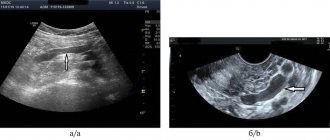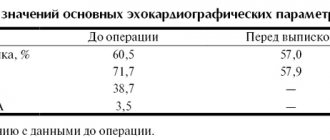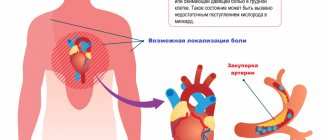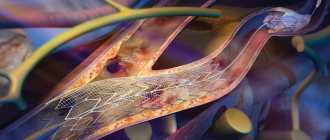Almost everyone hears the phrase “diabetes mellitus”; it frightens little sweet tooth lovers, and those over 50 often talk about it. But almost no one talks about prediabetes. , and in vain. But diabetes mellitus is almost always preceded by prediabetes - a precursor condition in which the first pathological changes begin to occur in the body. Prediabetes and diabetes mellitus differ in blood sugar levels: people with prediabetes have higher glucose levels than normal, but not enough to be diagnosed with type 2 diabetes. Fortunately, with timely diagnosis and treatment, the condition can be corrected and the development of dangerous complications can be prevented. Experts D ILA will tell you how.
Diabetes mellitus affects 8% of our planet's inhabitants: that's almost 600 million people worldwide. About 1.3 million registered cases in Ukraine. But experts clarify: the real number of cases is much higher, since many simply do not know that they have diabetes. The disease develops gradually, in the initial stages it is asymptomatic or with very mild clinical manifestations. Therefore, diabetes mellitus is often diagnosed late, already at the stage of severe vascular or infectious complications. In order not to miss the disease when it is still correctable, it is necessary to constantly monitor your blood sugar levels and check your health, special attention should be paid to early laboratory markers of prediabetes. At DILA you can undergo comprehensive screenings Program 148 “Prevent diabetes and associated risks” and Program 191 “Risk assessment of type 2 diabetes mellitus”, as well as individual studies - venous blood glucose, glycated hemoglobin (HbA1c), HOMA index and others.
Laboratory diagnostics will reveal a tendency to diabetes and exclude one of the possible causes of myocardial infarction, memory impairment, blindness, renal failure, excess weight, erectile dysfunction.
Important! If type 2 diabetes is not detected in time, it can cause the following serious complications:
- coronary heart disease and myocardial infarction;
- stroke;
- diabetic retinopathy and, as a result, vision loss;
- hearing impairment;
- diabetic nephropathy and renal failure;
- impotence;
- trophic non-healing ulcers on the legs and, as a result, amputation of the limbs;
- kidney and bladder infections;
- hypertension and other dangerous consequences.
Early detection and timely treatment of diabetes mellitus reduces the severity and complications of the disease. And if disorders are detected at the stage of prediabetes, most pathological changes are reversible.
Scale of the problem
The end of the 20th and beginning of the 21st centuries were marked by a significant increase in diabetes mellitus. The rapid increase in incidence indicates a global epidemic. According to the conclusions of WHO and the International Institute for Diabetes Research, we are facing a global catastrophe, which is already being called the “coming health crisis of the 21st century.” It could reduce the average life expectancy of people for the first time in 200 years. And, if 30 years ago the number of people with diabetes in the world did not exceed 30 million people, today this figure is rapidly approaching 500 million.
The earliest disability among all diseases and high mortality rates among patients have identified diabetes mellitus as one of the most important priorities in the national health care systems of all countries of the world. Patients with diabetes are 4 times more likely to die from cardiovascular complications (heart attacks, strokes); even during the global COVID-19 pandemic, it was patients with diabetes who constituted the main risk group for mortality from complications. Severe consequences that significantly reduce the quality of life are:
- retinal damage (diabetic retinopathy, blindness);
- kidney damage (nephropathy, chronic renal failure);
- damage to nerve endings at different levels (polyneuropathy);
- diabetic foot.
These complications cause disability and significantly reduce life expectancy.
How to make the analysis result as accurate as possible?
The levels of glucose and cholesterol molecules in the blood are values that can change under the influence of many factors.
To get the most accurate result of a laboratory study of blood composition using the biochemical analysis method, it is necessary to properly prepare the body the day before:
- Donate blood from a vein only in the morning - on an empty stomach;
- Before the procedure, do not eat for 8 to 12 hours;
- The day before you cannot fast for more than 12 hours, because the entire supply of sugar and cholesterol will be spent on restoring all organs during the fasting process, so the biochemistry result will be distorted;
- Do not eat fatty foods the day before, as well as foods based only on carbohydrates. It is necessary to have dinner with a piece of steamed or baked fish and vegetable salad;
- 2 days before the procedure for donating blood for sugar and cholesterol levels, refrain from drinking alcoholic beverages, and also do not perform heavy loads on the body;
- 3-4 hours before the blood donation procedure - stop smoking;
- Before you undergo the procedure of taking blood for cholesterol and glucose levels, you must warn your doctor about what vital medications you are taking;
- Donate blood in a calm state.
The levels of glucose and cholesterol molecules in the blood are values that can change under the influence of many factors.
“The first signs” of diabetes
Diabetes mellitus is preceded by the following conditions:
- Obesity of varying degrees, including the stage of overweight.
- Insulin resistance is elevated levels of insulin that are unable to effectively lower blood glucose (sugar) levels.
- Increased blood glucose levels on an empty stomach and after meals.
- Metabolic syndrome is a combination of several pathological conditions: abdominal obesity, high blood pressure, increased blood glucose and “bad” cholesterol fractions
It is noteworthy that all these changes are reversible if they are detected in the early stages and therapeutic and preventive measures are taken in a timely manner.
Already at the above stages of prediabetes, early changes are detected in small nerve fibers, in the vessels of the kidneys and retina. Pain and paresthesia in the feet (pain, burning, tingling sensation, cramps, sensation of “goosebumps” on the skin) may also occur, which are associated with damage to small vessels and nerve endings of the foot. Changes in the fundus, blood vessels of the kidneys and feet in the stage of prediabetes are a poor prognostic criterion associated with the risk of more rapid development of complications. Also, in the previous stages, combined, simultaneous damage to the vessels of the retina and kidneys is observed. This is due to the anatomical similarity of the blood vessels of both organs. In addition, the appearance of sugar in the urine leads to inflammatory whitening of the kidneys - pyelonephritis, which contributes to the development of chronic renal failure.
The platform for preventing diabetes mellitus is a timely visit to an endocrinologist and diagnosis of laboratory markers of prediabetes. In this case, the time factor is of key importance.
Functions of cholesterol
- Cholesterol is a building component of cell membranes, gives elasticity and strength to the membranes of all cells of the body;
- Lipids are responsible for the permeability of cell membranes and protect them from the influence of the external environment, increasing their immunity;
- Without enough cholesterol, the adrenal glands do not produce steroid-type hormones;
- Cholesterol converts sun energy into vitamin D with the help of liver cells;
- Cholesterol is involved in the production of bile acids;
- Provides communication between neuronal cells in the spinal cord and brain;
- Protect nerve fibers with a strong sheath;
- Protects the body from toxic elements entering it;
- Cholesterol helps the body resist infectious agents and invading viruses.
What is prediabetes and metabolic syndrome
Prediabetes is a condition of impaired carbohydrate metabolism, leading to a high risk of developing diabetes mellitus. Unlike diabetes, prediabetes is reversible if you take your health seriously and make lifestyle changes. This condition is associated with a quantitative and/or qualitative deficiency of insulin. The cause may be impaired glucose tolerance (when blood sugar is higher than normal after specific tests) and impaired fasting glycemia (when blood sugar is higher than normal on an empty stomach). In other words, prediabetes is a condition in which glucose is above normal values, but below the level established for diabetes.
Tissue insensitivity to insulin increases the risk of developing both prediabetes and type 2 diabetes. Insulin is a pancreatic hormone that helps transport glucose found in food from the blood into cells. We need glucose to produce energy. Insulin resistance means that the body produces insulin but does not use it effectively. Glucose accumulates in the blood, which can cause prediabetes, and subsequently diabetes mellitus. Most people with insulin resistance don't even know they have prediabetes for many years until it progresses to diabetes. If insulin resistance is diagnosed early, this dangerous disease can be prevented. If left untreated, prediabetes progresses to diabetes.
The main risk factors for the development of prediabetes and type 2 diabetes mellitus are divided into uncontrolled and controlled. The first group includes age over 45 years, cases of the disease in close relatives, and a history of gestational diabetes (diabetes during pregnancy).
Controlled factors:
- excess weight;
- high blood pressure;
- low levels of HDL (high density lipoprotein);
- high levels of triglycerides (fats).
By the way, all these factors are components of metabolic syndrome. It will be discussed below.
Metabolic syndrome. This is a symptom complex of interrelated risk factors for the development of cardiovascular diseases and diabetes mellitus. These factors include:
- dysglycemia (hyper- and hypoglycemia);
- high blood pressure;
- increased triglyceride levels;
- low high-density lipoprotein (HDL) levels
- obesity.
Diabetes mellitus, arterial hypertension, excess weight, coronary heart disease and thrombophlebitis are well known to modern people. Unfortunately, very often these disorders do not occur individually, but together. This phenomenon was called metabolic syndrome. In simple words, metabolic syndrome is a set of metabolic, hormonal and clinical disorders in the human body, the basis of which is obesity.
Today, metabolic syndrome has received many other names: you can hear in everyday life such names as “syndrome X”, “deadly quartet”, “Reaven syndrome” (after the name of Professor G. Reaven, who first summarized the symptoms), “insulin resistance syndrome” . WHO experts described it as the “plague of the 21st century,” and this assessment is not unfounded: symptoms of metabolic syndrome are already observed in 20-40% of the population, including children. The first signs of the disorder can appear as early as adolescence, and occur against the background of an increase in fat deposits.
The initial diagnosable symptoms of metabolic syndrome are:
- dyslipidemia - a violation of the normal ratio of fats in the blood;
- arterial hypertension – increased blood pressure levels.
But all metabolic manifestations of metabolic syndrome are based on the same insulin resistance - decreased sensitivity to insulin. Let us remember that all this occurs against the background of excess weight and increased blood pressure. Atherosclerosis and coronary heart disease are also closely related to metabolic syndrome.
However, not all symptoms of metabolic syndrome appear simultaneously and to the same extent. MS is often diagnosed even with slight obesity in combination with other symptoms - increased fatigue, shortness of breath, headaches, frequent urination, thirst, increased appetite, apathy. Another main symptom of metabolic syndrome is type 2 diabetes. You should also consult a doctor if you have angina (recurrent pain in the heart), erectile dysfunction in men and polycystic ovary syndrome in women, gout and increased uric acid in the blood.
References
- El-Farhan, N., Rees, D., Evans, C. Measuring cortisol in serum, urine and saliva - are our assays good enough? Annals of clinical biochemistry, 2021. - Vol. 54(3). — P. 308-322.
- Clinical laboratory diagnostics: textbook / ed. V.V. Dolgova, Federal State Budgetary Educational Institution of Further Professional Education "Russian Medical Academy of Continuing Professional Education". - M.: FGBOU DPO RMANPO, 2021. - 668 p.
- Bobrik, M.I. Mutual influence of thyroid and carbohydrate metabolism. Paradigms and paradoxes. MJE, 2015. - No. 3(67).
- World Gastroenterology Organization Global Practice Guidelines: Obesity 2015.
Which markers need to be constantly monitored?
Laboratory tests are something without which it is impossible to diagnose either prediabetes or diabetes, and ultimately, prescribe the correct treatment. However, to detect problems in the early stages, monitoring glucose levels alone is not enough. Often its concentration increases already at the stage of diabetes. To avoid missing life-threatening conditions and prevent the development of serious complications, it is necessary to monitor other laboratory markers.
Sugar for three months . To understand whether a person has diabetes or prediabetes, a blood glucose test is not enough. This test only shows your blood sugar levels at the time of the test. The results of a one-time study can be influenced by a huge number of factors - nutrition, stress, physical activity, concomitant diseases, sleep. Meanwhile, accurate data is especially important if there is a suspicion of prediabetes or diabetes mellitus. They both develop gradually, and with one-time tests it is possible to miss the onset of the disease.
The glycated hemoglobin (HbA1c) test displays the blood glucose level not at the time of blood collection, but over the previous three months. This is a type of hemoglobin that is irreversibly linked to glucose molecules. In diabetes mellitus, the amount of HbA1c increases. The advantage of the study is that in one test you will actually get 3 months of glucose monitoring. The fact is that the lifespan of red blood cells, which contain glycated hemoglobin, is 90-120 days. The higher the HbA1c level, the higher the glycemia in the last 3 months and, therefore, the higher the likelihood of developing diabetes complications.
Insulin resistance . To assess the state of tissue insensitivity to insulin, the HOMA (Homeostasis Model Assessment) index is used. It is calculated using the formula:
HOMA=fasting insulin (µU/ml)*fasting glucose (mmol/l)/22.5
The HOMA index can be used as an additional diagnostic indicator of metabolic syndrome, which increases the risk of developing diabetes and cardiovascular diseases.
Lipid profile . Studying the lipid profile will help to promptly detect changes in fat metabolism that are dangerous for blood vessels. The study is necessary for everyone who has signs of metabolic syndrome, who eats poorly, has bad habits and is included in other risk groups for cardiovascular diseases.
Key lipid profile indicators:
- Total cholesterol - its excess is associated with the development of atherosclerosis and cardiovascular disorders.
- HDL – high-density lipoprotein (“good cholesterol”). High concentrations of HDL reduce the risks of developing atherosclerosis and cardiovascular disorders.
- LDL and VLDL are low and very low density lipoproteins (“bad cholesterol”). They are considered harmful: there is a proven connection between high levels of LDL and the development of cardiovascular disorders. “Bad cholesterol” is deposited on the walls of blood vessels in the form of plaques, which can restrict the movement of blood and also make the vessels more rigid (atherosclerosis), which significantly increases the risk of heart disease (coronary artery disease, heart attack) and stroke.
- Triglycerides are fat particles, the content of which increases with uncontrolled diabetes and obesity. High triglyceride levels mean increased risks of developing cardiovascular disease.
All these indicators are part of the screening Program 113 “Lipid complex extended”. You can also undergo separate studies - “Cholesterol”, “HDL”, “LDL” and others.
Diabetes lowers the level of “good” cholesterol (HDL) and increases the level of “bad” cholesterol (LDL), significantly increasing the risk of problems with the cardiovascular system. This condition is very common and is called diabetic dyslipidemia. Research has shown a link between insulin resistance, a characteristic condition of prediabetes, and diabetic dyslipidemia, atherosclerosis and blood vessel problems. By the way, all these conditions can develop even before the onset of diabetes, which is why regular studies are so important for timely prevention and treatment of many complications.
Complexes with this research
Cola and chips Analysis of metabolic disorders caused by unbalanced nutrition 3,080 ₽ Composition
Biomarkers of the functional capacity of the liver. Extended examination 3,990 ₽ Composition
Biochemistry of blood. 8 indicators Minimum biochemical blood test 990 ₽ Composition
IN OTHER COMPLEXES
- Pregnancy planning. Clinical indicators 6,800 ₽
- Biochemistry of blood. 19 indicators 6,430 ₽
- Women's check-up No. 1 RUB 19,720
- Expanded hospital complex RUB 7,890
- Check-up No. 1 for children and teenagers 11,130 ₽
Prevention
- Nutritional adjustments to reduce blood glucose;
- Anti-cholesterol diet;
- Constant struggle with excess weight;
- Avoid nicotine and alcohol, and do not take any drugs;
- Constantly check your blood pressure and correct it with antihypertensive medications;
- Daily physical activity on the body;
- Engage in active sports;
- Avoid stress;
Systematically undergo preventive laboratory testing of blood sugar levels and cholesterol levels.







